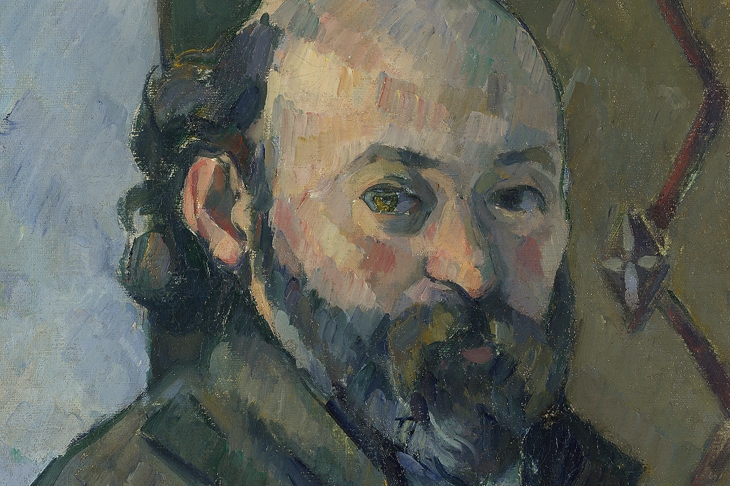The critic and painter Adrian Stokes once remarked on how fortunate Cézanne had been to be bald, ‘considering the wonderful volume that he always achieved for the dome of his skull’. It’s a good joke, and all the better for being perfectly true — as is demonstrated by the superb sequence of self-portraits included in Cézanne Portraits at the National Portrait Gallery. These are the finest hairless craniums in the history of art.
That, however, is only one of the attractions of the exhibition. This is the most impressive array of work, by one of the greatest of all painters, to be seen in London in more than 20 years. Cézanne once said, ‘I paint as I see, as I feel — and I have very strong sensations.’ He makes us share them too.
You can absolutely sense how powerfully Cézanne perceived the roundness of his own head. The same is true of innumerable amazingly volumetric depictions of things in these pictures: the cylindrical coffee pot beside the ‘Woman with a Cafetière’ (c.1895), the thick, felt-like folds of the jacket worn by ‘Man with a Pipe’ (1891–6). It’s not hard to understand why the artist hesitated between the words ‘see’ and ‘feel’ when he made that remark. He creates an impression that one could just reach out and handle these objects.
This is perhaps why, in Cézanne’s own mind — and several other people’s — his portraits were connected with his paintings of still life. The art dealer Ambroise Vollard famously related that when he started shifting his position during one of the interminable sittings for the wonderful picture in this show of 1899, the artist protested, ‘Do I have to tell you again you must sit like an apple? Does an apple move?’ Others picked up on this — the writer Charles Morice, for example, who asserted that ‘Cézanne takes no more interest in a human face than in an apple.








Comments
Join the debate for just £1 a month
Be part of the conversation with other Spectator readers by getting your first three months for £3.
UNLOCK ACCESS Just £1 a monthAlready a subscriber? Log in